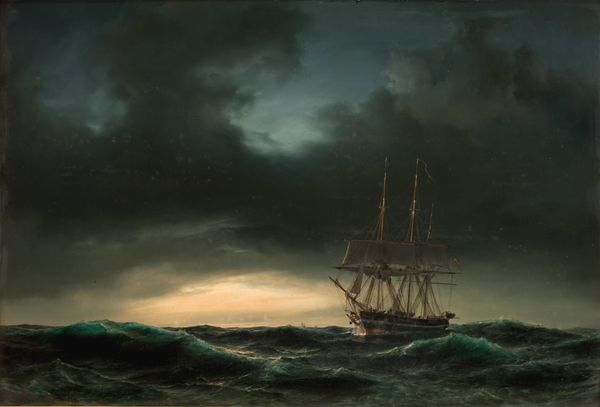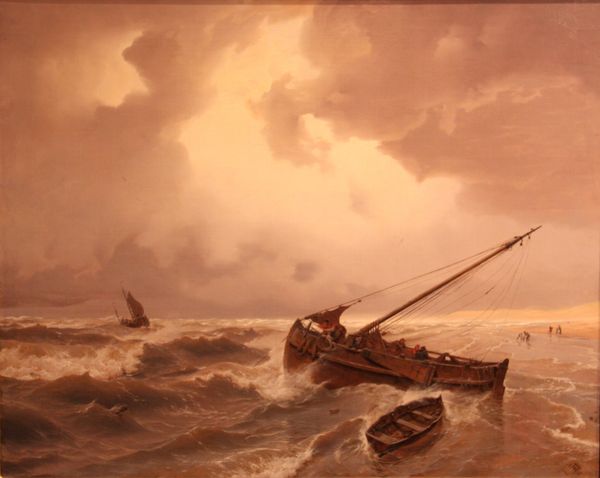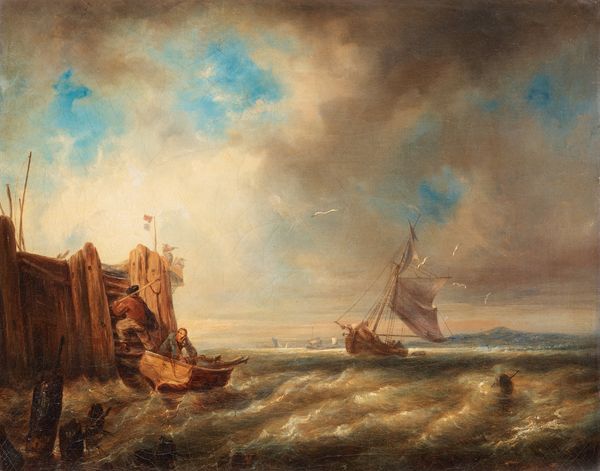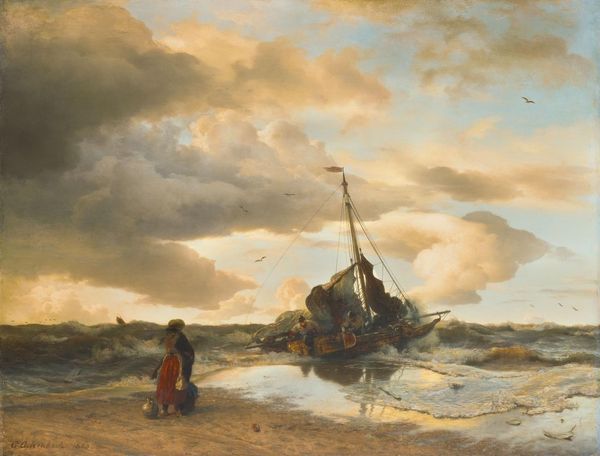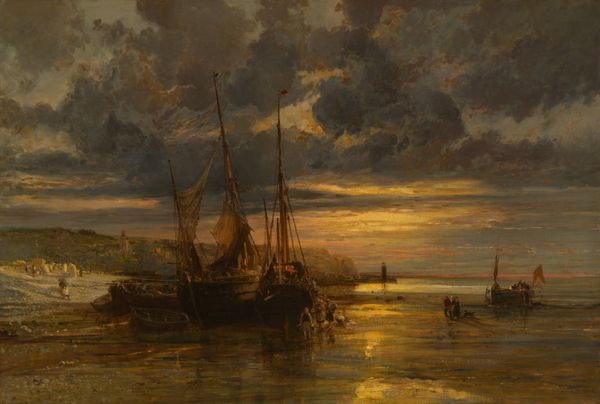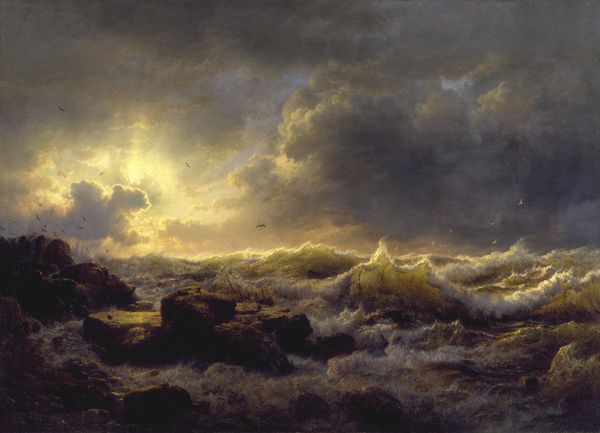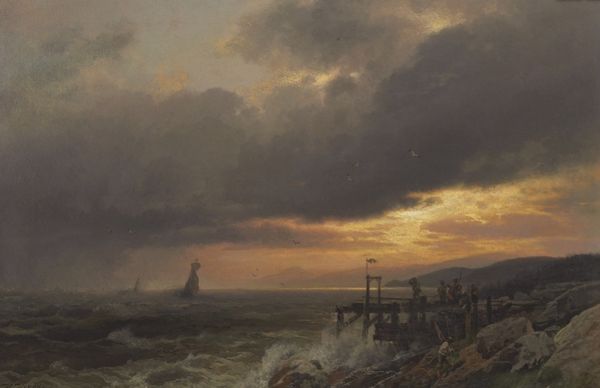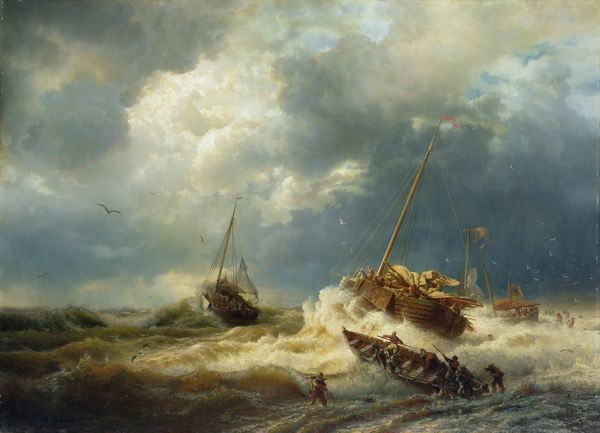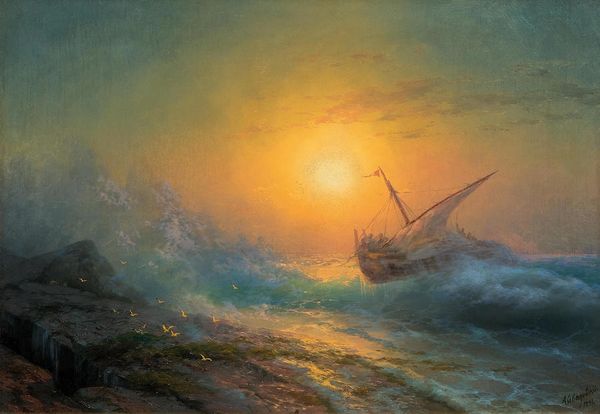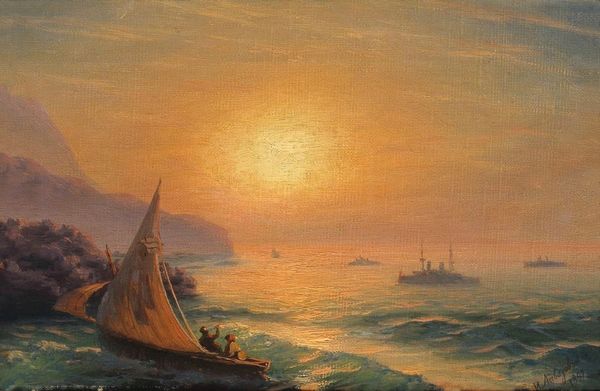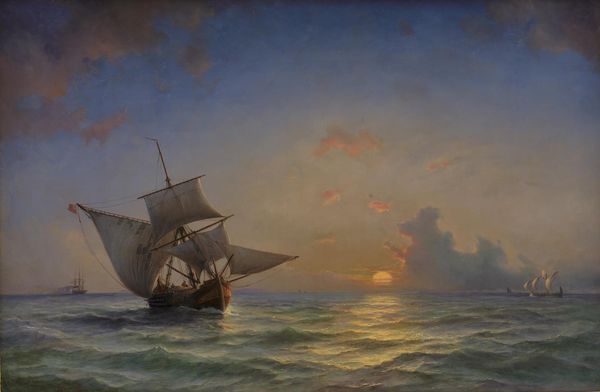
#
imaginative character sketch
#
fantasy concept art
#
fantasy art
#
fantasy illustration
#
possibly oil pastel
#
watercolour illustration
#
surrealist
#
fantasy sketch
#
watercolor
#
environment sketch
Dimensions: overall: 94 x 129.5 cm (37 x 51 in.) framed: 130.2 x 166.1 x 14 cm (51 1/4 x 65 3/8 x 5 1/2 in.)
Copyright: National Gallery of Art: CC0 1.0
Editor: Asher Brown Durand's "The Stranded Ship," painted in 1844, really evokes a sense of loss, doesn’t it? All that wreckage on the shore… It's like a maritime still life made of broken dreams. What do you see in it? Curator: It’s crucial to consider Durand's landscape painting through a materialist lens. Look at the broken barrels and planks on the shore – they speak of global trade, the exploitation of natural resources, and the labor required to build and sail such a vessel. The 'still life,' as you say, represents the wreckage of capitalist ventures and its very real human costs. What survives the shipwreck? The commodities, repurposed as refuse. Editor: I hadn't thought about it that way, I was just reacting to the drama of the scene. But those discarded objects… so you are saying the material reality becomes the subject? Curator: Precisely! Durand gives us romanticism grounded in material reality. The means of production are highlighted by their absence, represented through what they leave behind. Consider the cost of the ship’s construction – the trees felled, the labor exploited, the resources consumed. Can one truly celebrate the aesthetic of this artwork without acknowledging the inherent costs involved? Editor: So it's not just about the beautiful sunset, but also about what's left behind when things go wrong. That changes my whole perspective. Curator: Indeed. Think of the pigments themselves, the canvas – each component tied to a global network of extraction and trade. A materialist perspective compels us to acknowledge those histories, enriching our understanding of both the art and the society that produced it. Editor: Wow, I am not sure if I would have caught that! I will certainly think differently when I approach this type of artwork now. Curator: The beauty is in seeing, thinking, and being transformed.
Comments
No comments
Be the first to comment and join the conversation on the ultimate creative platform.
